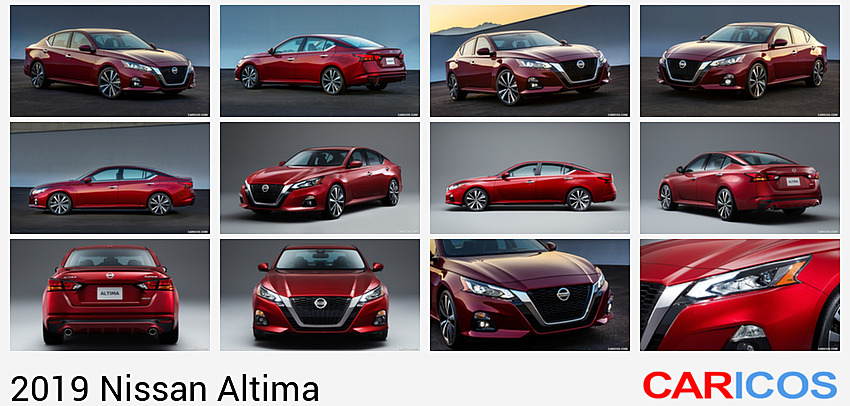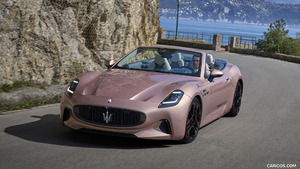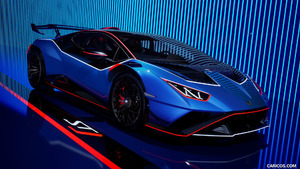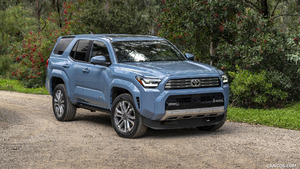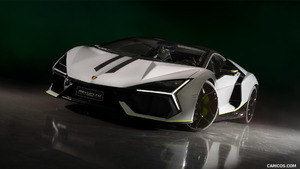2019 Altima
- Longer, lower, wider sixth-generation Altima design emphasizes sedan owners' desire for sporty sophistication
- Most expressive Altima ever embodies future direction of Nissan sedan design
- Uplifting interior design showcases open, airy environment and advanced Nissan Intelligent Mobility technologies
- Bold use of color and premium materials gives new design a "class-above" look and feel
If the designers behind the 2019 Nissan Altima have anything to say about it, the sixth generation of the company's top-selling sedan – with more than five million sold since introduction – is about to reinvigorate interest in midsize sedans.
Once the dominant body style in most major automotive markets, sedans sales have experienced erosion in favor of consumers' preference for crossovers and compact SUVs. That has left the leading global sedan manufacturers in a unique position of competing not only with each other, but within their own model lineups for sales.
"When we originally started designing the next generation of the Altima, it was still the company's best-selling nameplate in the critical U.S. market, so there wasn't much pressure to make radical changes," explained Alfonso Albaisa, senior vice president, Global Design, Nissan Motor Co., Ltd. "Then our own Rogue took off, drawing in new customers unlike anything we'd experienced before. This gave us the opportunity to rethink the Altima outside the traditional sedan design box and create something more exciting and yet more sophisticated."
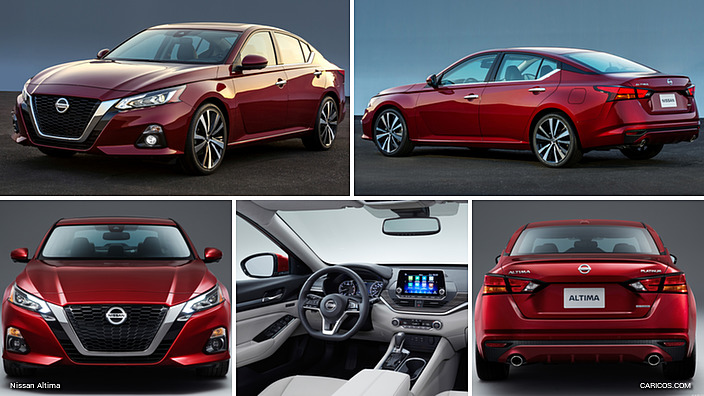 2019 Nissan Altima
2019 Nissan Altima
Thus, deep into the usual design cycle, teams from four major Nissan design centers – Japan, Europe, U.S. and China – were called together to start working on a compressed timeline to create a new global face for Nissan sedans. Simultaneously, in a nearby studio work was well underway for the stunning Nissan Vmotion 2.0 concept, which became the blueprint for the new Altima.
"The usual sequence for a concept car and production model is to have a little more breathing room between the two so you can gauge public reaction. But with the Altima the schedule was compressed to the benefit of both vehicles through an ongoing exchange of ideas," said Albaisa.
The other unique aspect of the new Altima design process was driven by the decision to make this generation more of a global vehicle, rather than just U.S.-focused.
Working side by side, the Nissan designers from each market influenced the others, resulting in a design appealing to global customers looking for sophistication, expressivity and sport.
Expressive design for empowered owners
Given the freedom to go bold and go quickly, the designers faced another challenge. In a changing marketplace for midlevel-priced vehicles, who represented the core, loyal sedan buyer? The answer came down to two words – professional and sophisticated.
"Our studies clearly identified a large group of people who choose sedans over crossovers because they see sedans as more efficient in terms of space and energy – and as vehicles that work equally well with clients as with carpools," said Albaisa. "We pictured empowered people who want everything in their lives – from homes to offices to fashion to cars – to be functional yet stylish every single day. The all-new Altima is exactly that."
With this key target consumer mindset in place, a couple of other timely decision fell into the designers' laptops. First, the corporate decision to make the Altima a true showcase for the most advanced Nissan Intelligent Mobility technology – as well as the major investment in two new engines. And secondly, the decision to give the Altima a new lower, longer, wider platform.
Those two decisions alone enabled a number of critical design choices, starting with the new Altima's proportions and stance. The lower-profile engines – both the new VC-Turbo and the new 2.5-liter 4-cylinder – gave the designers the freedom and space to lower the new Altima's cowl and hoodline – which also resulted in a lower instrument panel height and a more open-feeling cabin.
With the more compact engines, not only could the hood be lower but the front overhang could also be shortened. At the same time, the rear wheels could be pushed farther to the corners, helping create the sleek, sporty profile. At the same time, the designers opened up the wheel wells of the longer, wider body and fitted up to 19-inch wheels and tires – creating the sporty stance, like a track athlete getting ready to run.
"Stance is something most people don't think about but recognize it when they see it. It's that sense of a car just looking right. The new Altima, the way it sits, just looks right," added Albaisa.
Once the dimensions and under-the-skin engineering parameters were set, the real work began – draping and fine-tuning the sheet metal in a way that both breaks new ground and also is easily recognized as a Nissan.
The designers began by considering what they call "structural beauty," inspired by lean, strong and confident current-generation architecture and construction that uses curvy surfaces and lines to create an energetic and emotional flow. They also looked at today's slim, tailored men's and women's suits that project a sleeker, sharper modern style.
These qualities were expressed in the new Altima's linear, tailored look, with sharp horizontal lines emphasizing the lower, longer proportions. The bodyside, for example, is dominated by one prominent crease that runs from headlamp through the entire car.
"The Altima proportions gave us the freedom to create a body that's simple and streamlined, with a strong horizontal movement. Unlike typical sedans, the surfaces and body panels are anything but boring, with shoulder twists and sharp sheet metal stampings capturing and reflecting colors and light," said Albaisa.
The new Altima also embraces the new-generation Nissan signature design cues, including the distinctive evolving V-motion grille, floating roof and boomerang lights. For use on the new Altima, the roof pillars appear slimmer and the headlight more streamlined.
The available LED headlights and daytime running lights combine with the signature grille design to emphasize the front-end width and low hood. In the rear, the horizontal movement continues, showcasing the evolved boomerang taillight treatment.
Inside, the combination of sporty look and sophisticated presence continues. Traditional chrome decorations were updated with fewer, more refined matte chrome accents.
"We want the Altima interior to be inclusive for all occupants, with a sense of barrier-free togetherness, rather than the isolated feel of some crossovers and SUVs. Passengers should feel visually connected in a harmonious space that balances form, function and ease of use," added Albaisa.
The instrument panel features a standard 7-inch Advanced Drive Assist Display in front of the driver and an 8-inch center color display with multi-touch control with Apple CarPlay™ and Android Auto™ in the center. Special emphasis was placed on giving all of the switches and controls – including those for the new features such as the available ProPILOT Assist – an intuitive, effortless feel and natural operation.
The Altima's innovative NASA-inspired Zero Gravity seats, noted for their long driving range comfort, were enhanced with dual-density foam and added bolstering for improved holding and support around town driving.
"So many elements contribute to the new Altima making the driver feel confident and in control – from the firm hold of the seats to the direct response of the engine and transmission, the reduced eye movement of the intuitive meters and controls, the high quality materials and fit-and-finish, and the Intelligent Driving technologies that are always ready when needed," added Albaisa.
Modern and fresh – a special approach to colors and materials
The final touches to the new Altima design process came from the colors and materials team. In laying out the basic interior design parameters, the team sought to establish a look that was lean and clean – rather than the overdone interiors of typical sedans.
"Like the exterior styling, the approach to the interior trim and materials was super modern, without all the extras," said Albaisa.
From a color standpoint, the new Altima interior moves away from the usual saturation of various shades of beige to new, light gray tones and natural colors that help emphasize the wide and spacious cabin. Even the black hues have more contrast, with subtle gray thread accents.
Trim pieces are also more muted, with matte chrome and satin finishes. The available simulated wood finishers have warm and luxurious qualities. The result is a more premium feel for all Altima grade levels, not just the high-end grades.
The exterior color palette of the new Altima also takes a big step away from ordinary. Along with the whites, silvers and black, two Altima-specific colors are designed to drape the expressive body with a standout sense of richness and energy.
The Scarlet Ember premium color uses special tinting to add more depth and layering than regular paint surfaces. And, the one-of-a-kind Sunset Drift metallic orange has a color-shifting quality created by a special pigment shape. The way the paint reflects light as viewers move around the Altima gives the vehicle a unique dynamic energy.
Beauty beneath the surface
"Designers are always looking for the ‘wow' factor when people first see their vehicle, when they open a door and when they sit inside for the first time," concluded Albaisa. "But what really makes us proud is that the dynamic excitement of the new Altima's exterior and interior styling is matched – and then some – with its dynamic performance. The sedan game has officially been changed."

